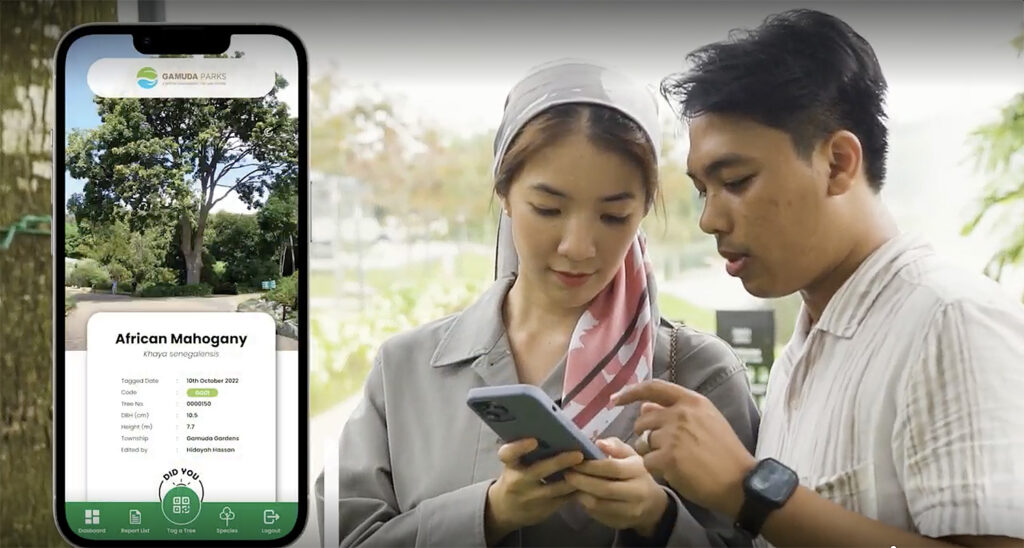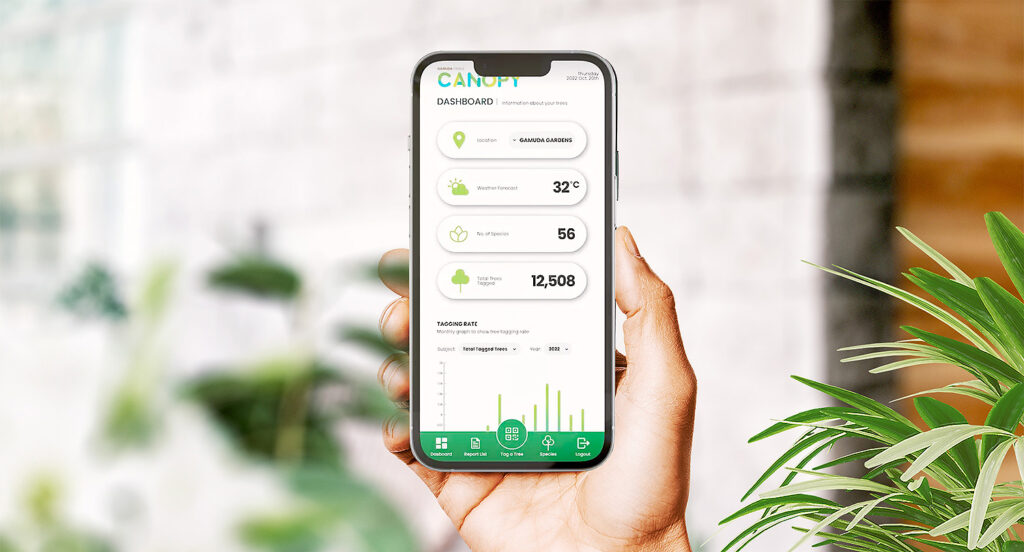An app-laudable solution to tag a million trees

The collaborative spirit between the GParks and GET team resulted in GParks Canopy – a smart systems solution
If there’s one thing Gamudians are good at, it’s innovating. And sometimes, these innovations come in bite sizes.
The GParks Canopy app by Gamuda Parks (GParks) is a smart and simple systems solution, done in collaboration with the Gamuda Excellence Transformation (GET) team. The app will be used to track, store and display information of the trees within all Gamuda Land townships and communities.
“By collaborating with GET, we formed a bird’s eye system for all our trees. Digitising our database increased effectiveness in our business unit,” shares Najwan Khalid, the project lead and assistant manager (landscape architect) at GParks.
Consolidating tree information via the app helps support Gamuda Land’s commitment to plant #OneMillionTrees across all its townships by 2023.
“We worked together to ideate and provide guidance. We came up with a process with clear end goals.
“It was a lot of hard work, but we believed in their idea, plan, and vision – it’s this syncing of idea and collaboration that made the project possible,” says Sachdave Singh, a software development engineer with the GET team.

Sachdave mentions that the GParks team enrolled in the Business Innovation Programme (BIP) and went through the steps in the workshop and the result was a barebones version of the app, which he and his team helped to reskin, streamline workflow, and fixed some bugs.
The app, launched in December, took nearly six months to develop in-house using NuxtJS as the frontend, while also utilising Google Cloud Platform tools such as Firestore and Cloud Functions.
The idea was to remotely manage and track the full life cycle of the trees cultivated across Gamuda townships. The vision was also to enhance visitors’ experience at Gamuda’s parks in an interactive format via QR-scannable tags that act as unique identifiers of each tree.
Hence when you’re at Gamuda Gardens the next time, scan the PDF tag on the individual trees (so far, more than 100 trees have been tagged) and instantly learn about the tree’s species, growth record and benefits.
The app will also be used in Gamuda City and Celadon City in Vietnam starting April, according to Sachdave.
Before GParks Canopy, the tree tagging and tracking system available to the GParks team was a very time consuming and laborious manual method. Relying on the conventional method and external vendors is not sustainable in the long run.
Now, the GParks team has better control and flexibility with this in-house resource and the digitalised system grants 50% cost and time reduction.

Conventionally, tree tagging, temporary tag printing and installation, database entry, and permanent tag printing and installation take about five weeks. With GParks Canopy, it takes only two and a half weeks to tag trees, print and install permanent tags, and add data to the database.
Features like an interactive map that shows the number of trees planted in their respective locations, an automatic carbon sequestration calculation and tracking of the flowering and fruiting season may be in the pipeline for the GParks Canopy app.
But for Sachdave, it’s not just about upgrading the app. He believes it is to have “the ingenuity to solve problems together through creativity and innovation.”
Ultimately, says Najwan, it’s all about “constantly looking for new innovative solutions to adapt with the ever-changing era as the topic of sustainability evolves.”
“Adaptability builds resilience, assuring a healthy social vitality while fulfilling the needs of current generations without compromising the needs of future generations.
“Hence, collaboration of ideas on top of diverse application of skills, knowledge and technology is an important step in gathering adequate resources to achieve a sustainable outcome,” Najwan concludes.

